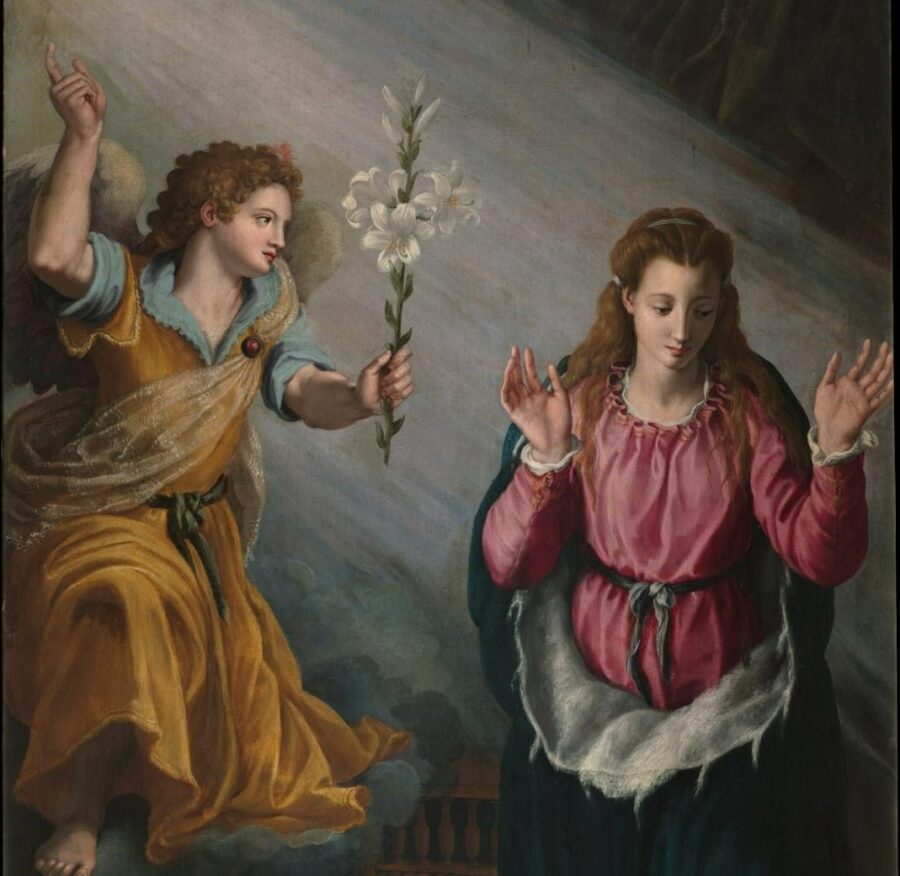A year ago we posted a Catalan song about the Annunciation in which the archangel Gabriel appears to the Virgin Mary while she sits working in a lace-school, with her companions Susannah and Pauleta. That song was popular in the lace and sewing schools run by female teaching orders in Catalonia. The newly established active orders of nuns that were springing up all over Europe in the nineteenth century were keen on the apocryphal legends about the childhood and youth of the Virgin, and in particular the time she spent, supposedly, crafting textiles for the Temple of Jerusalem.
In medieval and early modern visual representations of the Annunciation, these legends are invoked through the presence of the basket of white linen that is often depicted at Mary’s side as she receives the Angel’s message. Artists clearly thought of Mary as an embroiderer. Did any think of her as a lacemaker?

Alessandro Allori, ‘The Annunciation’, 1603, Galleria dell’Accademia di Firenze.
It’s taken us a while but we have discovered one painting which features Mary with a lace pillow. It’s dated to 1603, and it’s by the Florentine artist Alessandro Allori (1535-1607). It can now be found in the Galleria dell’Accademia di Firenze. It came to the Galleria from the Medici’s villa di Castello, though it’s not clear whether the Medici family were the original patrons for this work.

Alessandro Allori, ‘The Annunciation’, 1577-78, Galleria dell’Accademia di Firenze. Note the basket and embroidery.
Allori had painted annunciations before, and included the more traditional basket of linen to embroider (there’s one in the Galleria’s collection, from 1577-8). So the lace pillow, with its eight bobbins containing gold thread, is definitely a departure. It’s also an unusual picture because the Virgin is not facing the angel Gabriel but towards the viewer. These peculiarities have led one art historian to suggest this was not originally designed for display in a church, but for the rooms of an aristocratic lady, where it would have formed part of her private devotions.

Detail: Alessandro Allori, ‘The Annunciation’, 1577-78, Galleria dell’Accademia di Firenze.
On the symbolism of the basket of linen in portrayals of the Annunciation, see Marlène Albert-Llorca, ‘Les fils de la Vierge. Broderie et dentelle dans l’éducation des jeunes filles’, L’Homme 35:133 (1995): 99-122.










